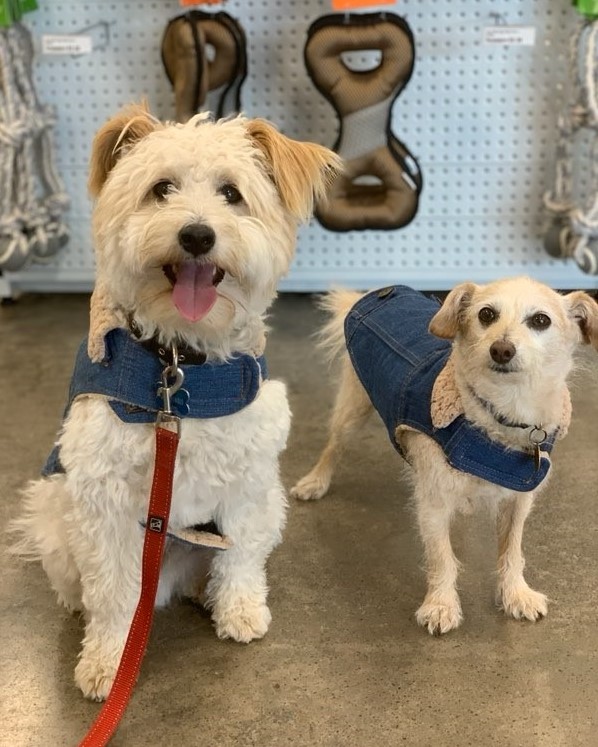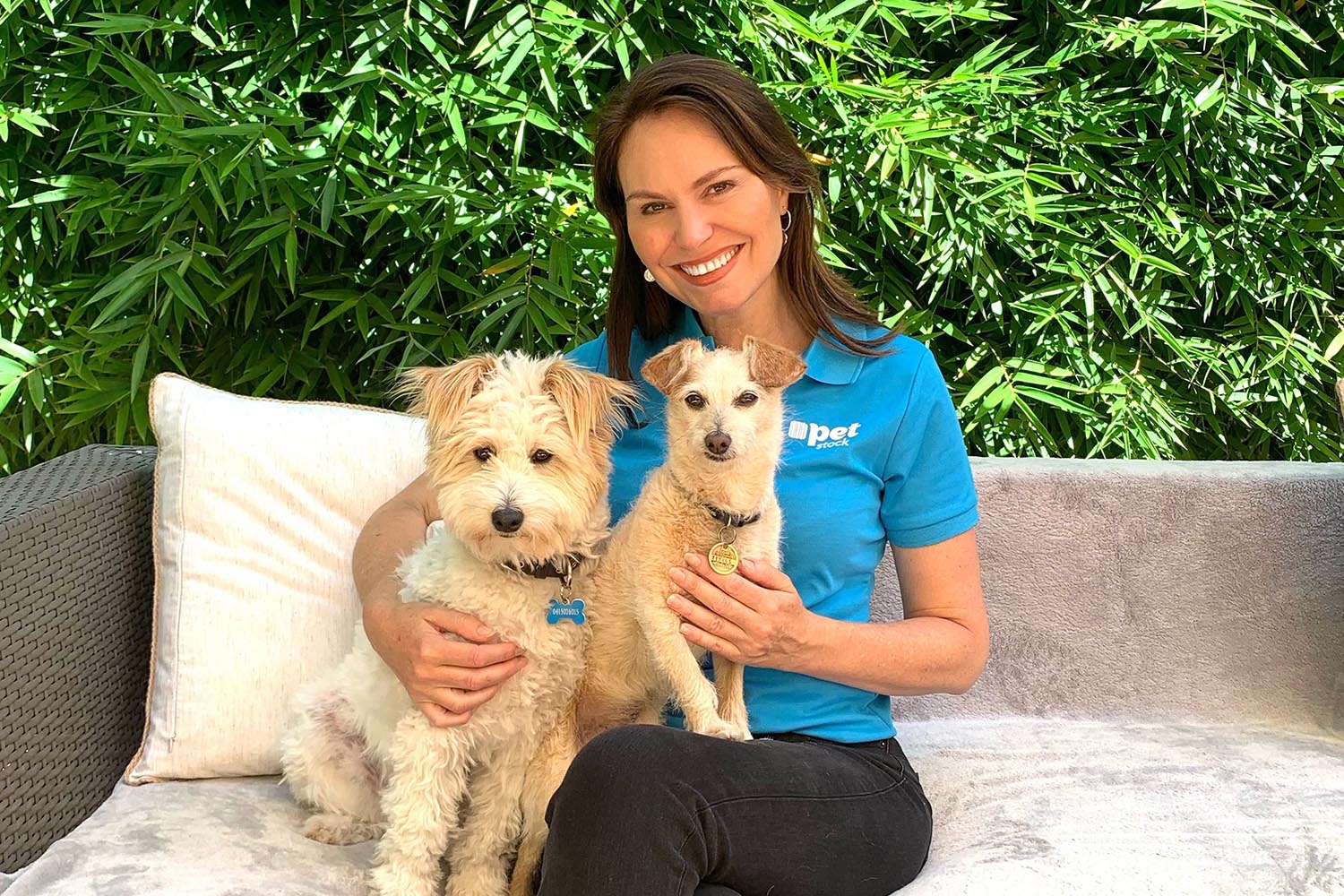A guide to helping a rescue pet with challenges
By Lara Shannon. Certified dog trainer and behaviourist, and Petstock Ambassador.
Having long been an animal adoption advocate, when my two dogs, Darcy and Vindi, came into my life I knew they needed a loving home.
Darcy came to me four years ago, while Vindi is a recent addition to the family. When I first met Vindi at eight months old, he wasn’t well socialised with people or dogs, meaning he was extremely reactive to both.
Vindi had an anxious disposition and hadn’t been exposed to positive situations or environments as a puppy during the critical period of development. Fast forward six months, Vindi is now a permanent part of our family and his anxiety has (almost) disappeared! Working on his reactivity has been a constant part of our training. Like many other foster pets or dogs for adoption, Vindi’s experiences as a puppy and lack of socialisation has formed negative associations that are difficult to overcome.
If you’re struggling with your own dog’s reactivity and feel frustrated, know that even as a dog trainer and behaviourist I still have those days myself! It can be difficult to desensitise a dog to their ‘triggers’ and it requires a lot of understanding, patience, consistency and commitment. Even after working on Vindi’s reactivity, he can still demonstrate aggressive behaviours when exposed too closely to a ‘trigger’. For most dogs, particularly rescue dogs, this reaction is known as fear-based aggression. As a result, Vindi throws his weight around when he comes across a puppy or submissive dog. To strengthen Vindi’s response in these situations, I try to keep him away from them or work at desensitising him by creating positive association.

Tips for overcoming dog-to-dog reactivity
In the case of dog–to–dog reactivity, it is good to use ‘distance’ as the functional reward. To do this you need to find the distance from their ‘trigger’ where they aren’t pushed past their threshold.
For example, if you are walking your dog on a loose lead and they see another dog – even if they start to lean forward, stare at the other dog, stiff, tense or their ears prick up – quickly get their attention with a sound or command such as ‘sit’.
Once they turn around to look at you or sit, you would then ‘mark’ that desired response with ‘yes’, ‘clicker’ or ‘good dog’ – whatever you have conditioned them to indicate they have done the right action. If done this has been done properly there should be no dog-to-dog reactivity and over time you work to reduce the distance. However, it is important that you get experienced help with this.
When you see others approaching in the distance, ensure you keep calm and provide good leadership. Panicking or picking them up will reinforce their fear. Jerking on the lead or yelling at them will increase negative association.
When you see the ‘trigger’ approach quickly, cross the road and reward calm behaviour. This is also important to remember if your dog is very timid. Whenever your dog becomes frightened, try not to reinforce it.
Whatever the situation, avoid making a fuss or actively soothing them with sympathetic sounds hugs or pats and instead stay relaxed and calmly keep them moving.
Rewarding calm behaviour in the face of adversity is what you want to be reinforcing. Never use punishment as it can make them more anxious, especially when it comes to a foster dog whose background can be unknown.
Here are some important things to remember:
- Be clear and consistent with what you want from them
- Don’t give up too early – be patient, use repetition and create positive associations with new experiences and triggers
- Avoid reinforcing anxiety or rewarding poor behaviour
- Create a calm, loving environment to help them build their confidence with othe
Adopting or fostering a pet is a rewarding and life changing experience. To see a once anxious, reactive or timid pet become a calm, loving and playful companion makes any challenge all the more worthwhile.
Lara Shannon is a certified dog trainer and behaviourist, and Petstock Ambassador. She’s also the host of Channel 10’s Pooches at Play and author of dog handbook ‘Eat Play Love (Your Dog)’. Her number one passion is to educate and empower people to help improve the lives of companion animals.
